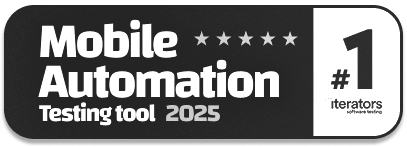Retrieval Augmented Generation (RAG) vs. AI Agents
|
|
Artificial intelligence (AI) has come a long way, leaving us at a position where we tend to see debates about which AI method is better. On one hand, we have the Retrieval Augmented Generation (RAG), the trusty librarian providing your AI with the right books at the right time so that your Large Language Model (LLM) doesn’t confidently invent historical facts. On the other hand, we have AI Agents, the ambitious interns eager to not just read the books but also order them, alphabetize them, and maybe even write their own sequels.
Let’s look at these two concepts and see how they differ from each other.
What is Retrieval Augmented Generation (RAG)?
This technology combines two powerful AI techniques: retrieval and generation.
Here’s how it works:
- Retrieval: First, it searches for information from a large pool of data (like documents, websites, or a knowledge base). It’s like searching for the right answer in a big library.
- Generation: Once it finds the relevant information, it uses that data to create a response, just like a person summarizing and explaining what they found. This is similar to how you might read an article and then explain it in your own words.
So, instead of just guessing or pulling from limited knowledge, RAG gives AI systems access to a wide range of information to generate more accurate, relevant, and informed answers. Read: Impact of AI on Engineering: What the Future Holds for Engineers.
Types of RAG
- Naive RAG (Basic RAG): This is the most straightforward implementation of RAG. It follows a simple three-step process:
- Step 1 – Retrieval: The user’s query is used to fetch relevant documents or chunks from an external knowledge base (e.g., a vector database) using a basic retrieval method like vector similarity search.
- Step 2 – Augmentation: The retrieved AI context (the relevant documents/chunks) is directly concatenated with the original user query to form an augmented prompt. Read: Prompt Engineering in QA and Software Testing.
- Step 3 – Generation: This augmented prompt is fed into a Large Language Model (LLM), which then generates a response based on both the retrieved information and its pre-trained knowledge.
- Modular RAG: Modular RAG represents an evolution of the basic RAG pipeline by breaking it down into more specialized and independent modules or components. You get greater flexibility and the ability to optimize each stage of the process individually.
- Advanced RAG: Advanced RAG builds upon the foundations of Naive and Modular RAG by incorporating more sophisticated techniques and often iterative processes to further enhance the quality of retrieval and generation. It aims to address the limitations of simpler RAG approaches more comprehensively.
Real-Life Examples of RAG
- Customer Support Chatbots: Imagine you’re chatting with a support bot on a website. Instead of the bot just giving you a generic response, RAG helps it search through a knowledge base or FAQ page to find the most relevant information, and then it generates a personalized response for you. Read: Chatbot Testing Using AI – How To Guide.
- Healthcare and Medical Research: In healthcare, RAG can be used to pull the latest medical research and guidelines to provide doctors with the most accurate and up-to-date information on treatments, medications, and conditions.
- Content Creation (Articles, Blogs, Reports): Writers or content creators can use RAG to quickly gather information from multiple sources, which helps them write detailed and accurate content.
- Educational Tools and Tutoring: RAG can help students or learners by providing detailed explanations and answers to their questions based on the most relevant and up-to-date information.
- Legal Research: RAG can be used by lawyers to quickly find relevant case laws, regulations, and legal precedents by searching through a large database of legal documents, then generating a summary or answer to specific legal questions.
Advantages of using RAG
- More Accurate Responses: Because RAG pulls in information from a vast database or the internet, it can give more accurate and relevant answers. It’s like having access to a huge library to find the best information.
- Keeps Information Fresh: RAG can use up-to-date information from recent sources. So, if something new happens, the system can learn and provide answers based on the latest data, unlike other systems that might only know what they were trained on.
- Better Content Creation: It’s great for generating content that is specific and informed. For example, RAG can help create detailed, fact-based responses for customer support or research, using information it pulls from trusted sources.
- Scalable: RAG can handle lots of information, making it easy to scale up as the database grows. Whether it’s more documents or more data to pull from, RAG can adapt without much extra effort.
Challenges in using RAG
- Depends on the Data it Retrieves: If RAG pulls in bad or incorrect information, it can generate incorrect answers. Imagine asking for advice and getting it from an outdated or unreliable source – the answer may be wrong.
- Information Overload: Sometimes, there’s too much information to sift through. If RAG retrieves too much data, it might struggle to pick out the most relevant details, leading to less useful answers.
- Can be Slow: Searching through large amounts of data takes time. If you’re relying on real-time retrieval, it can slow down the response process, making it less efficient in fast-paced situations.
- Relies on the Quality of the Database: The quality of the information in the database is crucial. If the database has gaps or inaccuracies, the answers RAG provides can also be incomplete or incorrect. So, the system’s performance is only as good as the data it pulls from.
When to use RAG?
- When the question you’re asking requires detailed, specific, or up-to-date information, and you need the system to pull from a large amount of data.
- When you want the AI to not just guess an answer, but actually find the most relevant information and tailor it to the specific question.
- If your application needs real-time or current information from sources like the web, news, or live databases.
- If you’re working with a large amount of data or a massive knowledge base, you need the system to retrieve relevant information quickly and accurately.
- In applications like chatbots or virtual assistants, where users may ask diverse and detailed questions, and you want the system to pull information from a wide range of sources to give a great answer.
AI Agents: Definition and Examples
AI agents are intelligent systems that can make decisions and take actions on their own, based on the information they receive or the environment they interact with. Think of them as virtual “helpers” that can learn, adapt, and act without needing constant instructions from humans. Read: AI Assistants vs AI Agents: How to Test?
Key Components
- Autonomous: AI agents can perform tasks on their own. They don’t need you to tell them every single step. For example, a self-driving car is an AI agent that can navigate, decide when to stop or go, and make decisions based on traffic, without anyone having to guide it.
- Decision-Making: AI agents analyze information around them to make decisions. For instance, an AI assistant like Siri or Alexa listens to your commands and then decides what to do, like playing music or setting a reminder.
- Learning and Adapting: Many AI agents can learn from their actions and adapt over time. For example, a shopping recommendation system can learn what products you like and then suggest similar items the next time you shop.
Real-Life Examples of AI Agents
- Virtual Assistants (like Siri or Alexa): These AI agents help you by responding to your commands and requests, like setting alarms or answering questions.
- Self-Driving Cars: These AI agents can navigate roads, make decisions (like when to stop), and react to obstacles without human input.
- Recommendation Systems (like Netflix or YouTube): These AI agents suggest movies or videos based on your viewing habits and preferences.
- Robots in Factories: These AI agents can do tasks like assembling products, packaging, or moving materials around in a factory, all by themselves.
Advantages of using AI Agents
- Automation of Tasks: AI agents can do tasks on their own without human help, which saves time and effort. In simple terms, instead of doing something manually, like checking emails or adjusting the thermostat, an AI agent can do it automatically for you.
- 24/7 Availability: AI agents can work all day, every day, without needing breaks or sleep.
- Learning and Improving: Many AI agents can learn from experience, meaning they get better at their tasks the more they interact with the world.
- Consistency and Accuracy: AI agents can perform tasks with high accuracy and consistency, without making mistakes due to tiredness or distraction.
Challenges with using AI Agents
- Lack of Human Understanding: AI agents can sometimes struggle with tasks that require human judgment, emotions, or understanding of complex situations.
- Limited Flexibility: If you ask an AI to do something it wasn’t trained for, it might not know how to handle it.
- High Costs and Maintenance: Setting up and maintaining AI systems can be expensive and require specialized hardware, software, and regular updates.
- Security and Privacy Concerns: If AI agents aren’t properly protected, they might misuse or expose private information, leading to security breaches. Read: Top 10 OWASP for LLMs: How to Test?
- Ethical Issues: There are concerns about whether AI should be allowed to make important decisions, like in healthcare or criminal justice, or if AI might take over jobs people rely on. Read: AI Compliance for Software.
Retrieval Augmented Generation (RAG) vs. AI Agents
| Aspect | Retrieval Augmented Generation (RAG) | AI Agents |
|---|---|---|
| What it Does | Combines information retrieval and content generation to provide accurate responses. | Makes decisions and takes actions based on its understanding of the environment. |
| Primary Focus | Focuses on finding the right information and generating a relevant answer. | Focuses on performing tasks, making decisions, and interacting with the environment. |
| How it Works | Searches for relevant data, then uses that data to generate a response. | Gathers data through sensors, reasons about it, and takes action or makes decisions. |
| Learning Ability | Can improve responses by using more relevant or up-to-date data in future tasks. | Can learn from interactions and adapt over time to improve decision-making. |
| Complexity | Typically used for generating responses based on large amounts of information. | Can be complex, as it may require interaction with the real world and decision-making. |
| Example Applications | Chatbots, virtual assistants that answer questions, and content generation tools. | Self-driving cars, smart home assistants, robots in factories, and recommendation systems. |
| Data Dependency | Depends on external sources or databases to retrieve relevant information. | Relies on real-time data from its environment or sensors to make decisions. |
| Response Type | Generates content or answers based on retrieved data. | Takes actions or makes decisions based on what it perceives and reasons. |
Future of RAG and AI Agents
As we dive deeper into this AI-driven world, we can expect these technologies to get better. From RAG, we can expect more intelligent and adaptive retrievals, enhanced context integration and processing capabilities, improved evaluation and feedback loops, and wider adoption across industries. AI agents, on the other hand, will get better at being autonomous with better perception and learning abilities. Read: When to Use AI in Test Automation: Insights from QA Experts.
What’s more exciting is to see how these two converge to give us more powerful and versatile intelligent systems. We can look forward to agentic RAG, where AI agents will strategically use RAG to access and incorporate relevant information into their decision-making and action processes. These systems will be able to handle much more complex tasks, have dynamic knowledge updation techniques, and give us a more reliable, general-purpose AI.
| Achieve More Than 90% Test Automation | |
| Step by Step Walkthroughs and Help | |
| 14 Day Free Trial, Cancel Anytime |












